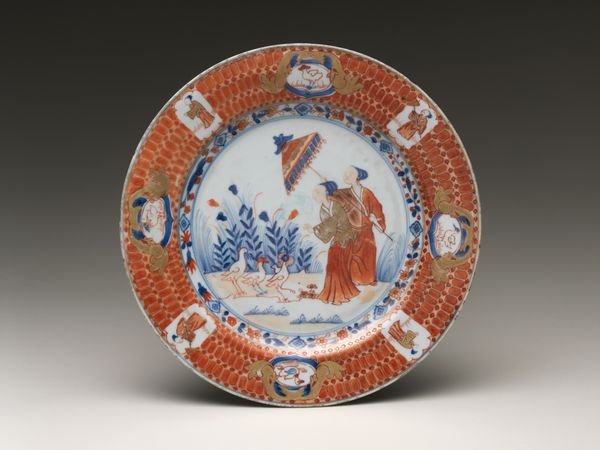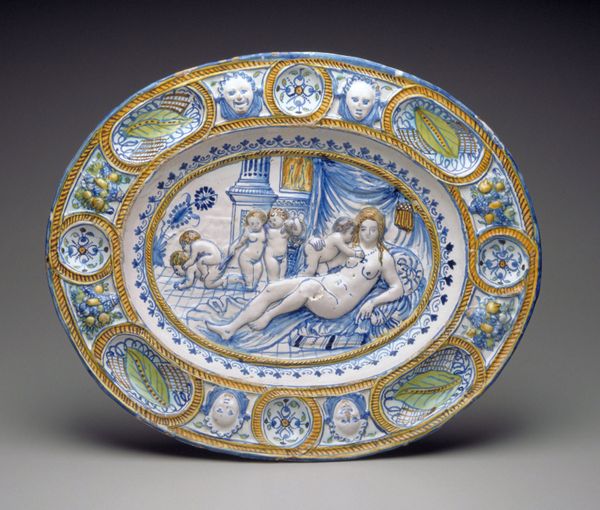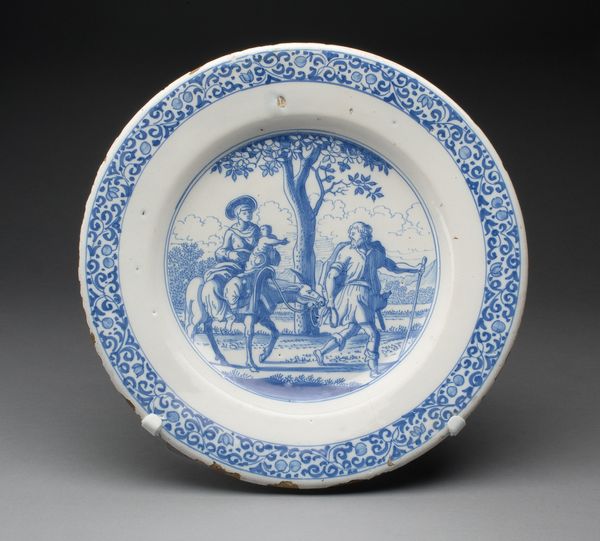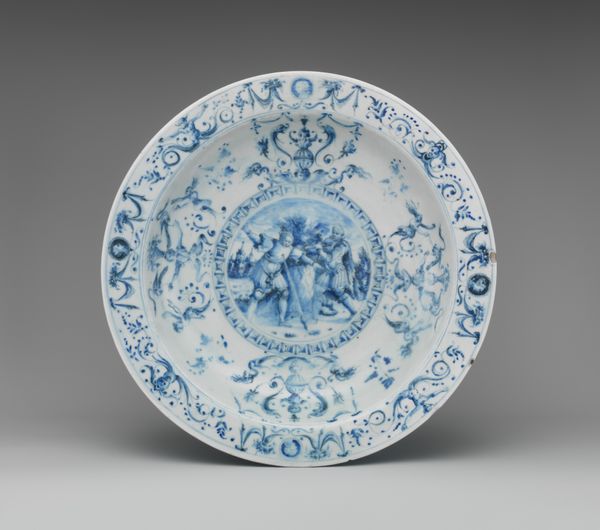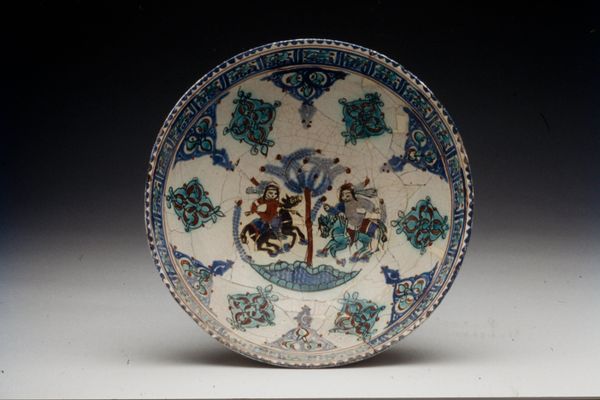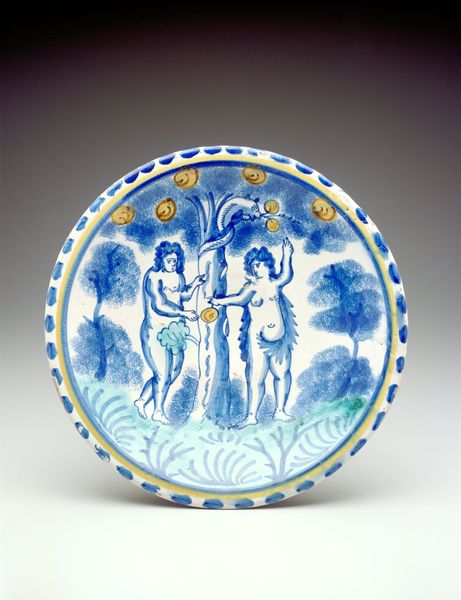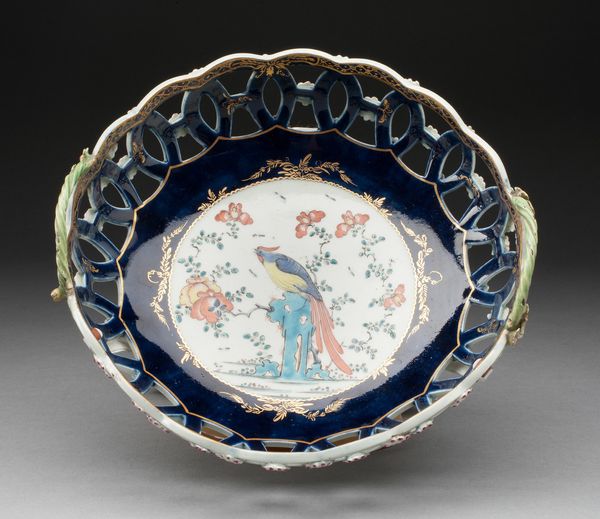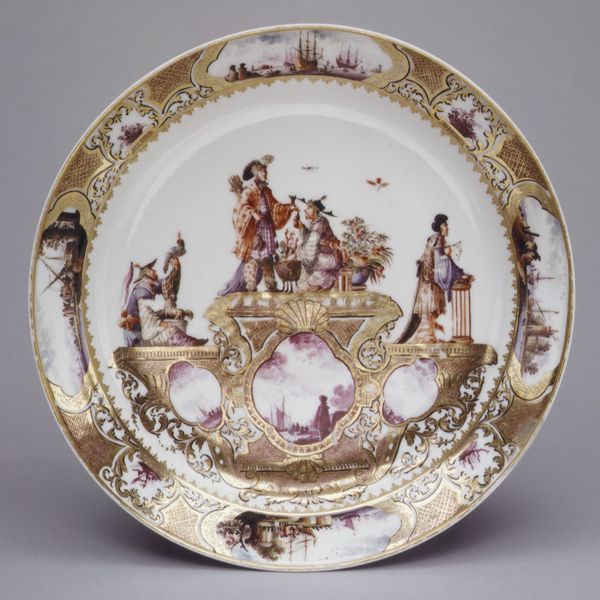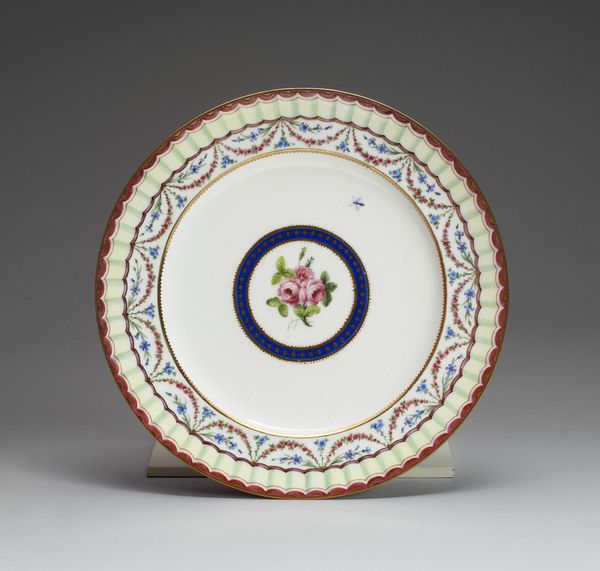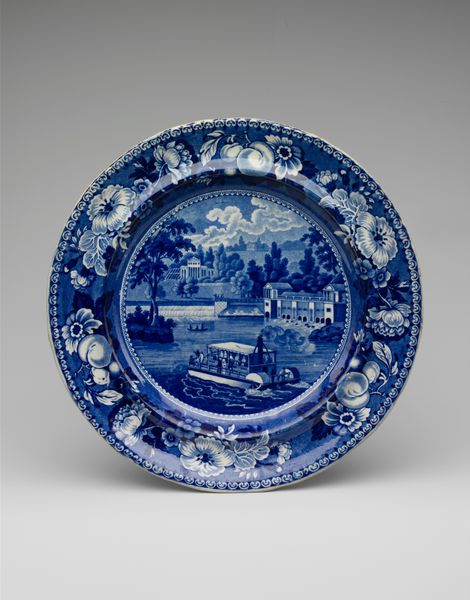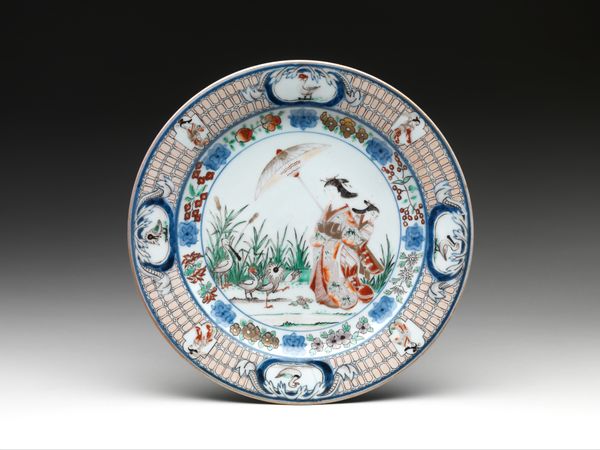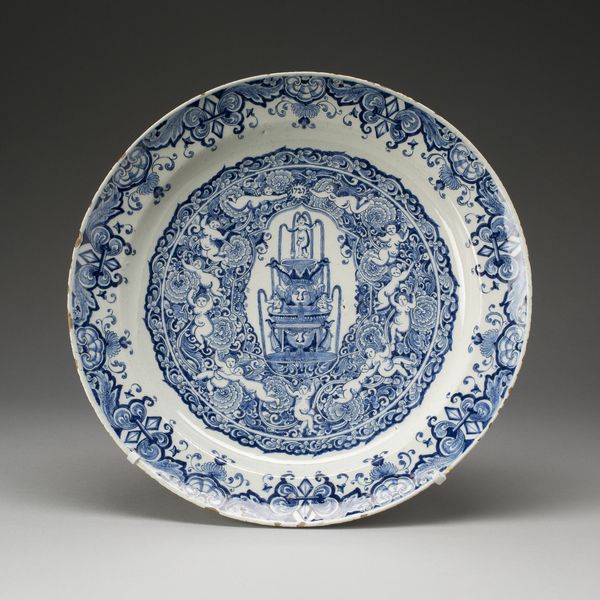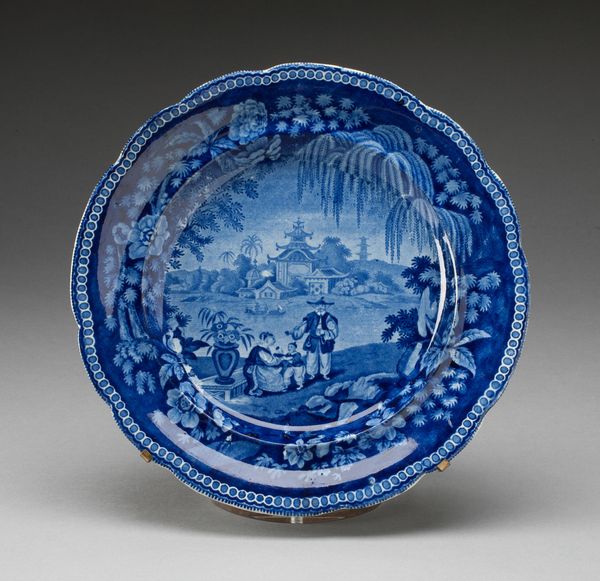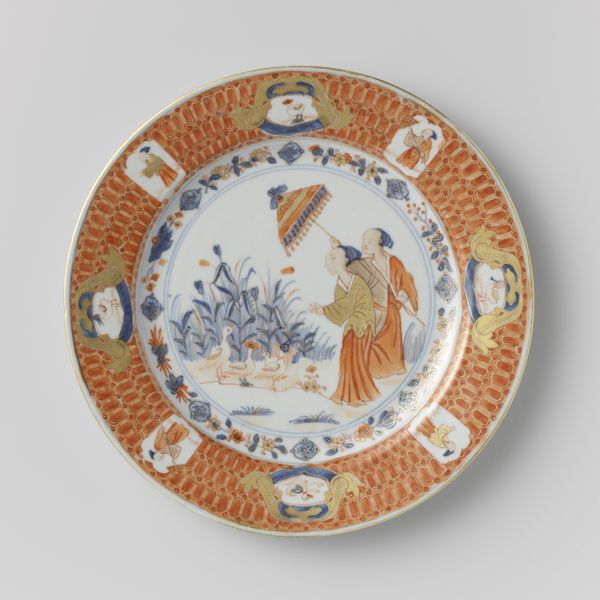
painting, ceramic, porcelain
#
allegory
#
baroque
#
painting
#
ceramic
#
porcelain
#
ceramic
#
genre-painting
#
history-painting
#
decorative-art
Dimensions: 15/16 x 9 1/16 in. (2.38 x 23.02 cm)
Copyright: Public Domain
Curator: Before us is an intriguing porcelain plate created between 1735 and 1750. It's known as the "Placeman plate," and its authorship remains anonymous. You can find it here at the Minneapolis Institute of Art. Editor: Well, my initial response is captivated. There's a sense of symbolic violence tempered by the medium's delicateness and the decorative border. It gives an impression of conflicted ideals. Curator: Quite. The allegorical representation of Justice at its center dominates, with her sword raised high above the prostrate lion. Can you interpret what such imagery tells us? Editor: The symbolism seems straightforward at first—Justice prevailing, perhaps—but note how vulnerable that lion appears. Lions usually evoke courage and strength, but here it seems to signify an oppressive force being suppressed in the name of "Libertas Populi" written on the wall. This juxtaposition gives rise to complex issues of power, repression, and possibly violent liberty. The three angels seem to act as observers. What do you make of this contrast in tonality? Curator: A fascinating interpretation. From a formalist standpoint, the monochromatic blue decoration against the pale, subtly textured background elevates it beyond mere functional pottery. The design exhibits symmetry but note the strategic deviations that provide the composition energy, keeping Justice ever-so-slightly off-center. It lends dynamic balance, wouldn't you say? Editor: Definitely, but there is more at play here. Look how history becomes decorative in its transmutation into design. Does such elevation not risk making such complex sociopolitical themes—freedom achieved with force—merely ornamental and palatable? Curator: It certainly raises questions regarding intention. Are we meant to celebrate or reflect? However, considering its function, one can appreciate the craftsmanship beyond these ambiguities—the delicate floral work on the borders harmonizing exquisitely against that forceful scene. Editor: True, while this particular plate invites complex questions about justice, representation, and history itself; however its aesthetic and artful craftwork leave much to reflect.
Comments
No comments
Be the first to comment and join the conversation on the ultimate creative platform.
